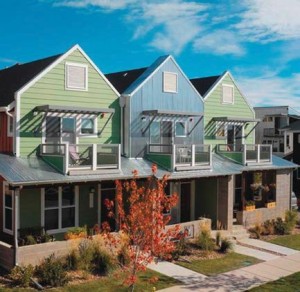The fiscal impact on local government from a lack of affordable housing is an often overlooked aspect of the affordable housing debate, and findings released in a case study of Adams County is not painting a good picture for Colorado’s counties.
A joint report by Colorado Futures Center at Colorado State University and the Piton Foundation found that Adams County faced $170 million in crowded-out household spending due to a lack of affordable housing options.
Households that are cost-burdened have a dampening economic impact on sales tax revenues, and in the case of Adams County it led to a $6 million lost revenue impact to the county and its municipalities.

“Too often affordable housing is considered only for its social benefits,” said co-author Dr. Phyllis Resnick, lead economist for the Colorado Futures Center at CSU. “However, as this study shows, there are fiscal benefits as well. This study, by identifying the fiscal benefits, will add to a more complete conversation about the true impacts of building affordable housing in Colorado.”
Colorado counties struggle with affordability
Adams County has a projected population of 840,000 in 2035, making it the future largest county in the region and reflects the makeup of other counties in the state, including Denver, where the percentage of families in the county living in poverty is greater than the county’s proportion of state population.
“The gap impact study specifically looks at what role local governments are playing, if any, with respect to the provision of additional support to cost burdened households, and what revenues are potentially left on the table,” said co-author Jennifer Newcomer, Director of Research for The Piton Foundation at Gary Community Investments.

The study findings show that lower income households are having a more difficult time finding affordable housing now than at the end of the Great Recession. In Adams County, nearly 80 percent of households that earn less than $35,000 spend more than 30 percent of their income on housing – the standard for when a family is housing cost-burdened.
The challenges in Adams County are consistent with local and national reports indicating the lack of affordability across the Denver metro housing market, and, as seen in a complimentary report, housing is critically important to economic health.
Looking at Colorado, trends are similar
A large-scale report released by Housing Colorado in conjunction with the Adams County case study revealed the critical role new home construction plays in the overall health of the Denver metro region, the state and the national economy.
The report, Driving a Vibrant Economy: Housing’s Role in Colorado’s Economic Success, written by Dr. Elliot Eisenberg, a nationally acclaimed economist specializing in local and national housing markets found that more housing is needed in Colorado, particularly for households earning $20,000 a year or less. According to the findings, there is a shortfall of more than 100,000 homes priced at affordable levels for these households – a gap that will take more than 100 years to eliminate based on current rates of affordable rental housing construction.
According to the study, the overall economic impact of home building in 2013 was $5.15 billion – 1.7 percent of the gross state product of Colorado. In addition, new home building and

rehabilitation employed more than 81,000 workers, which is more than 2.9 percent of the entire Colorado labor force, and will result in ongoing annual recurring revenue to state and local governments of $203.3 million.
“Not only does housing meet the most basic of needs in our communities, this report demonstrates conclusively the immediate and long-term economic benefits of housing construction and rehabilitation in Colorado,” said Sara Reynolds, executive director of Housing Colorado. “A healthy local housing market includes a mix of housing types and price points that meets the needs of the entire community. This includes affordable options for working families, seniors and veterans that fosters diverse and vibrant communities, and makes economic sense.”
The reports were commissioned by a coalition of housing and community development partners, including Housing Colorado, the Colorado Municipal League, Colorado Futures Center at CSU, the Home Builders Association of Metro Denver, the Metro Denver Economic Development Corporation, Mile High Connects and The Piton Foundation.
“This report shows not only how financially important housing is to the state and local economy in terms of jobs and tax revenues, but also how critical it is to continue to build a diverse mix of housing and keep Denver affordable and vibrant,” Eisenberg said. “There is no one-size-fits-all solution; rather it will take a number of approaches to insure necessary housing gets built.”
View the studies in their entirety: